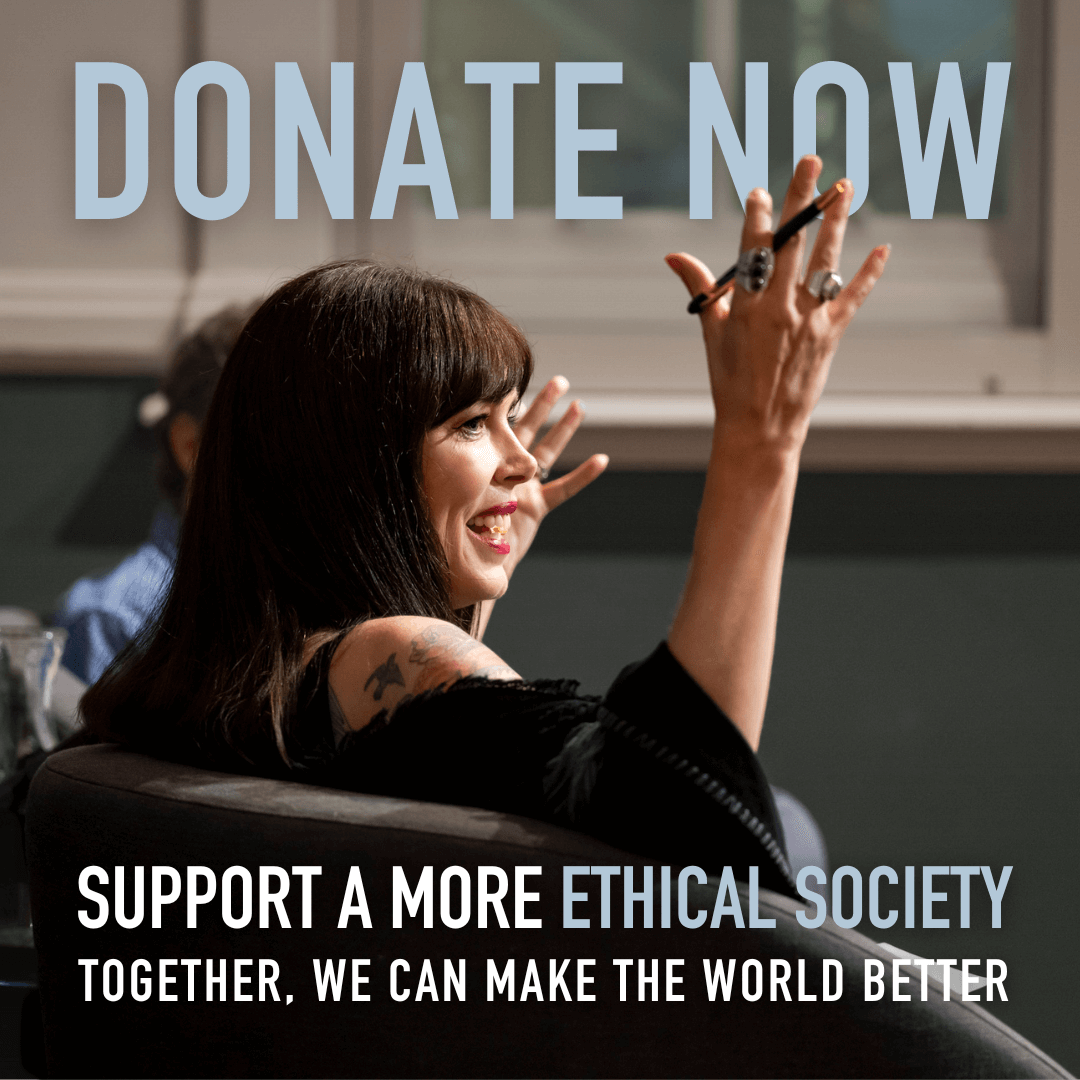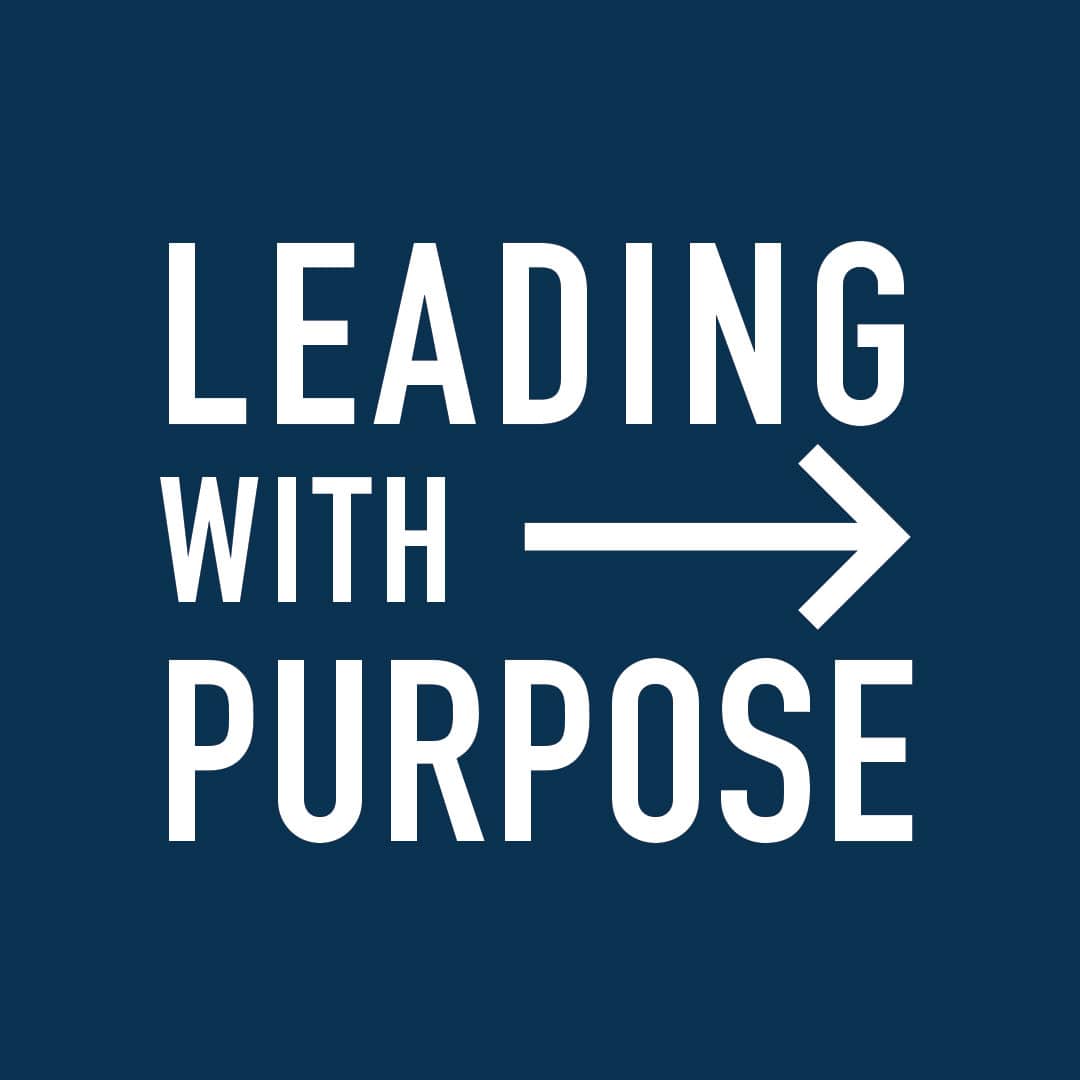Explainer: Getting to know Richard Branson's B Team

Explainer: Getting to know Richard Branson’s B Team
Opinion + AnalysisBusiness + Leadership
BY The Ethics Alliance Cris 5 DEC 2019
If you ever dreamed of rubbing shoulders with the brightest shining stars of business, you probably couldn’t turn down an invitation to join Richard Branson’s B Team.
The team of luminaries was launched by the Virgin Group founder in 2013 to power a movement to use business to build a better world.
Its goals
The B Team aims to “confront the crisis of conformity in leadership”.
“We need bold and brave leaders, willing and able to transform their own practices by embracing purpose-driven and holistic leadership, with humanity at the heart, aligned with the principles of sustainability, equality and accountability,” according to its website.
“Plan A – where business has been motivated primarily by profit – is no longer an option. We knew this when we came together in 2013. United in the belief that the private sector can, and must, redefine both its responsibilities and its own terms of success, we imagined a ‘Plan B’ – for concerted, positive action to ensure business becomes a driving force for social, environmental and economic benefit.
“We are focused on driving action to achieve this vision by starting ‘at home’ in our own companies, taking collective action to scale systemic solutions and using our voice where we can make a difference.”
Membership
Aside from Branson himself, who has charisma to burn, his hand-picked team of leaders include:
- Co-founder and former Puma chair, Jochen Zeitz
- Chairman & CEO of Kering, François-Henri Pinault
- Chairman Emeritus, Tata Sons, Ratan Tata
- Chairman, Yunus Centre, Professor Muhammad Yunus
- General Secretary of the International Trade Union Confederation Sharan Burrow
- President and CEO, Mastercard, Ajay Banga
- Founder and CEO of Thrive Global, Arianna Huffington
- Former Chairman and Chief Executive Officer, Dow Chemical and DowDuPont, Andrew Liveris
Its influence
Branson is a master of marketing, and has long cultivated an image of a fun-loving, brilliant, rule-breaking entrepreneur with a socially-responsible heart. He has launched around 400 companies and has become one of the world’s most influential leaders, with a personal wealth estimated at $7.7 billion.
A stay at his luxury resort Necker Island in the British Virgin Islands is the modern-day equivalent of Charlie Bucket’s “golden ticket” to the chocolate factory (from the Roald Dahl children’s book). It was, for instance, the first holiday destination for the Obama family after they left the White House in 2017.
Branson has long harnessed his star power to humanitarian ventures and he has now provided B Team “vehicles” for others to do the same.
Its projects
The B Team has three causes:
Climate: committing to a just transition to net-zero emissions by 2050.
Workplace equality: creating working environments that recognise and respect the human rights and talents of all people.
Governance: raising the bar on what good governance looks like – and keeping accountability, sustainability and equality at the centre of these efforts.
Recent achievements
At the UN Climate Action Summit in September, B Team Leader and Allianz CEO Oliver Bäte led a group of 12 asset owners with $A3.5 trillion in assets under management in committing to net-zero emissions by 2050—a target aligned with a pathway to 1.5°C warming – and helping companies within their portfolios to achieve the same goal. They join the 87 companies who also made this commitment.
In 2015, The B Team was instrumental in ensuring that a commitment to net-zero emissions by 2050 was included in the text of the Paris Agreement.
In Australia
The local arm of the B Team launched in October 2018 and includes Branson, Sharan Burrow as vice-chair, ANZ Bank chair David Gonski as co-chair, and Chief Executive Women director Lynette Mayne as co-chair. Other members are:
- Scentre Group CEO Peter Allan
- Suncorp Group CEO Michael Cameron
- Former Chairman and CEO of Dow Chemical, Andrew Liveris
- CEO of MLC, Geoff Lloyd
- CEO of Mirvac Susan Lloyd Hurwitz
- Australian Council for International Development president Sam Mostyn
- Chairman of the Light Warrior Group Radek Sali
- Executive Chairman of Carnival Australia Ann Sherry
- EnergyAustralia managing director Catherine Tanna.
MLC’s Lloyd says the group aims to use the power of its influence to make the conversations “go viral”.
“It is about a core group of leaders who will represent those principles and drive those initiatives and connect through to the global B Team. We are trying to create a conversation and lead that conversation through the individuals in those businesses that are part of it.
“The principles are really all there to help leaders lead their businesses and provide a course, if you like, direction, some guidance as to how we should think very differently about work.
“There is a community expectation that business is there to do good.”
The 100% Human project
This initiative brings together more than 150 organisations around the world to shape and identify the elements that define a 100% Human organisation: respect, equality, growth, belonging and purpose. The aim is to recruit to the cause one million companies globally.
100% Human has been collecting examples of innovative thinking in its published Experiments Collection, which provides details of around 200 workplace initiatives, which are trying out new ways of working. These “experiments” include: providing opportunities for refugees and migrants; championing diversity, inclusion and belonging; and supporting employees’ mental health and wellbeing.
The initiative was launched in Australia in June, 2019 with the five principles of: strategically planning for technology, creating career growth opportunities, focusing on the whole person, establishing support networks, and being publicly accountable.
The former CEO of Perpetual Ltd, Lloyd joined MLC Wealth a year ago to engineer its separation from the National Australia Bank. He says he introduced some of 100% Human’s leadership philosophies to Perpetual in 2015 and is now using them to help develop a new, individual workplace culture at MLC.
“At MLC, we’re reviewing all of our people processes and policies and aligning our culture towards that of allowing people to be 100% human at work,” he says. “So, that’s from our leave policies, our carer leave, our flexibility, the way in which we lead ourselves, the way in which our leadership team really do express, and understand that our team have complex lives and needs.”

This article was originally written for The Ethics Alliance. Find out more about this corporate membership program. Already a member? Log in to the membership portal for more content and tools here.
Ethics in your inbox.
Get the latest inspiration, intelligence, events & more.
By signing up you agree to our privacy policy
You might be interested in…
Opinion + Analysis
Business + Leadership
Self-interest versus public good: The untold damage the PwC scandal has done to the professions
Opinion + Analysis
Business + Leadership
Activist CEO’s. Is it any of your business?
LISTEN
Business + Leadership
Leading With Purpose
Opinion + Analysis
Business + Leadership, Health + Wellbeing, Relationships
Office flings and firings
BY The Ethics Alliance
The Ethics Alliance is a community of organisations sharing insights and learning together, to find a better way of doing business. The Alliance is an initiative of The Ethics Centre.
BY Cris
Pay up: income inequity breeds resentment

Pay up: income inequity breeds resentment
Opinion + AnalysisBusiness + Leadership
BY Fiona Smith Cris 5 DEC 2019
Public outrage over multi-million dollar CEO salaries will never go away when employees are underpaid. It offends our sense of fairness and the increasingly threadbare notion of Australia as an egalitarian nation.
This point is not lost on many who read about Woolworths’ admission it underpaid nearly 6,000 staff over ten years by a total $300 million.
The supermarket chain had failed to account for the actual hours that staff were working, with out-of-business-hours work patterns attracting penalty rates, which were not being added to their salaries.
Other companies which have been caught out with similar underpayments include Qantas, ABC, Commonwealth Bank, Bunnings, Super Retail Group and Michael Hill Jewellers.
While some business leaders laid blame on the complexity of modern awards, Fair Work Ombudsman, Sandra Parker said employers were at fault with “ineffective governance combined with complacency and carelessness toward employee entitlements”.
Human resources leader, Alec Bashinsky, was succinct in his response: “This is 101 stuff and not acceptable in any scenario”. For 14 years, Bashinsky was Asia Pacific talent leader for Deloitte, which employed more than 3,000 people in Australia alone.
Revelations such as the underpayments just add more fuel to the conflagration of distrust and anger, which has led to the rise of anti-establishment political movements around the world.
In Australia, it builds on a mountain of evidence of businesses behaving badly, following revelations of the deliberate underpayments and worker exploitation in the franchising sector and the litany of unethical decision-making unearthed in the recent Royal Commission into financial services.
CEO’s get richer, worker pay stagnates
While company reputations have been trashed over the past couple of years, business leaders have continued to prosper. Company boards responded to public resentment over CEO salaries by reducing the pay of incoming CEO’s… while handing out the second-biggest bonuses of the past 18 years.
Thanks to those bonuses, the median realised pay for an ASX100 CEO reached $4.5m in the last financial year, according to a report by the Australian Council of Superannuation Investors.
Leaders whose companies were directly involved in recent scandals have been punished. Big bank CEO’s saw their remuneration fall over the past year. However, total remuneration for top 50 CEO’s increased by 4 per cent on average, compared to general wage growth at 2.2 per cent, according to the Australian Financial Review.
Macquarie Bank’s Shemara Wikramanayake was the highest paid with $18 million, followed by Goodman Group’s Gregory Goodman with $12.8 million.
Labor MP and economist, Andrew Leigh says the growing gap between the leaders and the led poses a threat to the Australian ethic of egalitarianism.
“Australia is a country where we don’t have private areas on the beaches, we like to say ‘mate’ rather than ‘sir’, we sit in the front seat of taxis and we don’t stand up when the prime minister enters the room,” says Leigh, who is also Deputy Chairman of the Parliamentary Economics Committee.
Former chairman of the Australian Competition and Consumer Commission, Allan Fels, has written: “The increase in pay levels for CEO’s has occurred at a time when public trust in business is at a low ebb and wages growth in the broader economy can best be described as anaemic”.
The rising levels of income inequality create serious social harm, according to the Australian Council of Social Service (ACOSS).
Someone in the highest one per cent now earns more in a fortnight than someone in the lowest 5 per cent earns in an entire year.
“Excessive inequality in any society is harmful. When people with low incomes and wealth are left behind, they struggle to reach a socially acceptable living standard and to participate in society. This causes divisions in our society,” according to ACOSS, after the release of its Inequality in Australia report in July.
“Too much inequality is also bad for the economy. When resources and power are concentrated in fewer hands, or people are too impoverished to participate effectively in the paid workforce, or acquire the skills to do so, economic growth is diminished.”
Reining in the excesses
Investors have a mechanism to act if they believe boards have been overly-generous in executive remuneration. In 2018, 12 companies in the ASX200 had shareholders vote down board remuneration reports in a “first strike” action. A further seven were close to experiencing a first strike.
According to the “two-strike rule”, if subsequent remuneration reports are voted down by at least 25 per cent of shareholders, the board positions may be subject to a spill motion. At this point, no company has experienced a board spill as a result of this rule.
The two-strike rule came into effect in 2011 after a Productivity Commission Inquiry into Executive Remuneration found that executive pay went up over 250 per cent from 1993 to 2007.
Labor went into the last Federal election with a policy aimed at encouraging more moderation in executive pay, requiring companies to publish the ratio of the CEO remuneration to the median workers’ pay.
At present, ASX-listed companies have to publish their policies for determining the nature and amount of remuneration paid to key management personnel. However, without a requirement to divulge what the median worker is paid, a ratio cannot be calculated.
The United Kingdom and the United States have both introduced new regulation to require their biggest listed companies to divulge and justify the difference between executive salaries and average annual pay for their employees.
This is going to put more pressure on CEO salaries as the public gets a clear picture. Research in the US shows, for instance, that the average person thinks the pay ratio is 30:1 when the average is actually closer to 300:1.
Those disclosures can have material impacts on a business. The US city of Portland has imposed a 10 per cent tax surcharge on companies with top executives making more than 100 times what their median worker is paid and a 20 per cent surcharge if pay gaps exceed 250 to one.
Leigh says the top 50 CEO’s in Australia are now earning packages at a ratio of around 150 or 200 of median wages in their organisations.
“Those ratios are truly out of whack. If you go back to the 1950s, and 1960s, workers at Australia’s largest firms could earn in a decade what the CEO earned in a year.
“Now, it would take multiple careers for workers in many firms to earn what the CEO earns in a year.”
Setting a fair pay formula
When you have these two issues running concurrently – ever-rising CEO pay and underpayment of workers – it seems appropriate to take a new look at what fair pay looks like.
Some companies have tried to ensure fairness by setting CEO pay as a multiple of the salary of an organisation’s lowest-paid worker.
Mondragon is a Spanish co-op famous for its egalitarian principles. Its CEO is paid nine times more than what its lowest-paid worker earns. In comparison, the CEO of an average FTSE 100 company is paid 129 times what their lowest-paid worker earns.
Mondragon is not well-known in Australia, but is a vast global enterprise, employing more than 75,000 people in 35 countries and with sales of more than Euro12 billion per year – equivalent to Kellogg or Visa.
US ice cream company Ben & Jerry’s took inspiration from Mondragon, setting a five-to-one salary ratio when it started in 1985.
Writing in their book Ben Jerry’s Double Dip: How to Run a Values Led Business and Make Money Too, the founders Ben Cohen and Jerry Greenfield say: “The compressed salary ratio dealt with an issue that’s at the core of people’s concerns about business and their alienation from their jobs: the people at the bottom of the ladder, the people who do all the actual physical work, are paid very poorly compared to the people at the top of the ladder.
“When we started our business, we were the people at the bottom. That’s whom we identified with. So we were happy to put into place a system whereby anytime the people on the top of the organisation wanted to give themselves a raise, they’d have to give the people on the bottom a raise as well.”
Ben & Jerry’s kept that arrangement in place for 16 years but, when Cohen wanted to retire, attracting a replacement CEO meant raising the rate to a seven-to-one ratio.
“ … as the company grew, the salary ratio became problematic. Some people in upper-level management believed that we couldn’t afford to raise everyone’s salaries, and the salary ratio was, therefore, limiting the offers we could make to the top people we could recruit,” wrote the founders in 1998.
“Other people – Ben included – thought money wasn’t the problem, and that we’d always had problems with our recruitment process. Ben points out frequently that eliminating the salary ratio, which we did in 1995, has not eliminated our recruiting problems.”
The New Zealand Shareholders Association has also called (in 2014) for CEO base pay to be capped at no more than 20 times the average wage.
Fairness is important to us
Leigh, who wrote a book Battlers and Billionaires on inequality, says people naturally benchmark themselves against those around them: “That is how we figure out what we are worth”.
The point is that people care less about the dollar figure they are paid than they do about how it compares to others. If they think it is unfair, their attitude at work and motivation suffers.
“People work less hard when they feel they have not been adequately recognised within the firm,” says Leigh.
Pay transparency – making salaries public knowledge – can be a two-edged sword. People further down the “pecking order” feel worse when they see how others are paid more. However, people should be able to find out where they stand and what they need to do to climb the salary ladder.
“If you are running a firm where the pay structure is only sustainable because you are keeping it secret, then you are walking on eggshells. Ultimately, good managers should be able to be transparent with their staff. Secrecy shouldn’t be a way of doing business,” says Leigh.
“If you are playing football with David Beckham, you don’t begrudge the fact that David Beckham is pulling in a higher salary package than you. The problem arises when there are inequities that aren’t related to performance.
“People are comfortable with the fact that a full-time worker will earn more than a part-time worker, that someone who has another 20 years’ experience gets rewarded for that experience. But, if you are being paid more just because you are family friends with the CEO or you share the same race as the CEO or the same gender, then that is not fair.
“So pay transparency can produce fairer workplaces.”

This article was originally written for The Ethics Alliance. Find out more about this corporate membership program. Already a member? Log in to the membership portal for more content and tools here.
Ethics in your inbox.
Get the latest inspiration, intelligence, events & more.
By signing up you agree to our privacy policy
You might be interested in…
Opinion + Analysis
Business + Leadership, Relationships
There’s no good reason to keep women off the front lines
Opinion + Analysis
Business + Leadership
Self-interest versus public good: The untold damage the PwC scandal has done to the professions
Reports
Business + Leadership
EVERYDAY ETHICS FOR FINANCIAL ADVISERS
Opinion + Analysis
Business + Leadership
The case for reskilling your employees
BY Fiona Smith
Fiona Smith is a freelance journalist who writes about people, workplaces and social equity. Follow her on Twitter @fionaatwork
BY Cris
To fix the problem of deepfakes we must treat the cause, not the symptoms

To fix the problem of deepfakes we must treat the cause, not the symptoms
Opinion + AnalysisRelationshipsScience + Technology
BY Matthew Beard The Ethics Centre 5 DEC 2019
This article was written for, and first published by The Guardian. Republished with permission.
Once technology is released, it’s like herding cats. Why do we continue to let the tech sector manage its own mess?
We haven’t yet seen a clear frontrunner emerge as the Democratic candidate for the 2020 US election. But I’ve been interested in another race – the race to see which buzzword is going to be a pivotal issue in political reporting, hot takes and the general political introspection that elections bring. In 2016 it was “fake news”. “Deepfake” is shoring up as one of the leading candidates for 2020.
This week the US House of Representatives intelligence committee asked Facebook, Twitter and Google what they were planning to do to combat deepfakes in the 2020 election. And it’s a fair question. With a bit of work, deepfakes could be convincing and misleading enough to make fake news look like child’s play.
Deepfake, a portmanteau of “deep learning” and “fake”, refers to AI software that can superimpose a digital composite face on to an existing video (and sometimes audio) of a person.
The term first rose to prominence when Motherboard reported on a Reddit user who was using AI to superimpose the faces of film stars on to existing porn videos, creating (with varying degrees of realness) porn starring Emma Watson, Gal Gadot, Scarlett Johansson and an array of other female celebrities.
However, there are also a range of political possibilities. Filmmaker Jordan Peele highlighted some of the harmful potential in an eerie video produced with Buzzfeed, in which he literally puts his words in Barack Obama’s mouth. Satisfying or not, hearing Obama call US president Trump a “total and complete dipshit” is concerning, given he never said it.
Just as concerning as the potential for deepfakes to be abused is that tech platforms are struggling to deal with them. For one thing, their content moderation issues are well documented. Most recently, a doctored video of Nancy Pelosi, slowed and pitch-edited to make her appear drunk, was tweeted by Trump. Twitter did not remove the video, YouTube did, and Facebook de-ranked it in the news feed.
For another, they have already tried, and failed, to moderate deepfakes. In a laudably fast response to the non-consensual pornographic deepfakes, Twitter, Gfycat, Pornhub and other platforms quickly acted to remove them and develop technology to help them do it.
However, once technology is released it’s like herding cats. Deepfakes are a moving feast and as soon as moderators find a way of detecting them, people will find a workaround.
But while there are important questions about how to deal with deepfakes, we’re making a mistake by siloing it off from broader questions and looking for exclusively technological solutions. We made the same mistake with fake news, where the prime offender was seen to be tech platforms rather than the politicians and journalists who had created an environment where lies could flourish.
The furore over deepfakes is a microcosm for the larger social discussion about the ethics of technology. It’s pretty clear the software shouldn’t have been developed and has led – and will continue to lead – to disproportionately more harm than good. And the lesson wasn’t learned. Recently the creator of an app called “DeepNude”, designed to give a realistic approximation of how a woman would look naked based on a clothed image, cancelled the launch fearing “the probability that people will misuse it is too high”.
What the legitimate use for this app is, I don’t know, but the response is revealing in how predictable it is. Reporting triggers some level of public outcry, at which suddenly tech developers realise the error of their ways. Theirs is the conscience of hindsight: feeling bad after the fact rather than proactively looking for ways to advance the common good, treat people fairly and minimise potential harm. By now we should know better and expect more.
“Technology is a way of seeing the world. It’s a kind of promise – that we can bring the world under our control and bend it to our will.”
Why then do we continue to let the tech sector manage its own mess? Partly it’s because it is difficult, but it’s also because we’re still addicted to the promise of technology even as we come to criticise it. Technology is a way of seeing the world. It’s a kind of promise – that we can bring the world under our control and bend it to our will. Deepfakes afford us the ability to manipulate a person’s image. We can make them speak and move as we please, with a ready-made, if weak, moral defence: “No people were harmed in the making of this deepfake.”
But in asking for a technological fix to deepfakes, we’re fuelling the same logic that brought us here. Want to solve Silicon Valley? There’s an app for that! Eventually, maybe, that app will work. But we’re still treating the symptoms, not the cause.
The discussion around ethics and regulation in technology needs to expand to include more existential questions. How should we respond to the promises of technology? Do we really want the world to be completely under our control? What are the moral costs of doing this? What does it mean to see every unfulfilled desire as something that can be solved with an app?
Yes, we need to think about the bad actors who are going to use technology to manipulate, harm and abuse. We need to consider the now obvious fact that if a technology exists, someone is going to use it to optimise their orgasms. But we also need to consider what it means when the only place we can turn to solve the problems of technology is itself technological.
Big tech firms have an enormous set of moral and political responsibilities and it’s good they’re being asked to live up to them. An industry-wide commitment to basic legal standards, significant regulation and technological ethics will go a long way to solving the immediate harms of bad tech design. But it won’t get us out of the technological paradigm we seem to be stuck in. For that we don’t just need tech developers to read some moral philosophy. We need our politicians and citizens to do the same.
“At the moment we’re dancing around the edges of the issue, playing whack-a-mole as new technologies arise.”
At the moment we’re dancing around the edges of the issue, playing whack-a-mole as new technologies arise. We treat tech design and development like it’s inevitable. As a result, we aim to minimise risks rather than look more deeply at the values, goals and moral commitments built into the technology. As well as asking how we stop deepfakes, we need to ask why someone thought they’d be a good idea to begin with. There’s no app for that.
Ethics in your inbox.
Get the latest inspiration, intelligence, events & more.
By signing up you agree to our privacy policy
You might be interested in…
Opinion + Analysis
Relationships
Ozi Batla: Fatherhood is the hardest work I’ve ever done
Opinion + Analysis
Politics + Human Rights, Relationships
A critical thinker’s guide to voting
Opinion + Analysis
Business + Leadership, Relationships
What makes a business honest and trustworthy?
Opinion + Analysis
Relationships, Society + Culture
Meet Joseph, our new Fellow exploring society through pop culture
BY Matthew Beard
Matt is a moral philosopher with a background in applied and military ethics. In 2016, Matt won the Australasian Association of Philosophy prize for media engagement. Formerly a fellow at The Ethics Centre, Matt is currently host on ABC’s Short & Curly podcast and the Vincent Fairfax Fellowship Program Director.
BY The Ethics Centre
The Ethics Centre is a not-for-profit organisation developing innovative programs, services and experiences, designed to bring ethics to the centre of professional and personal life.
Taking the bias out of recruitment

Taking the bias out of recruitment
Opinion + AnalysisBusiness + Leadership
BY Fiona Smith Cris 5 DEC 2019
When recruiters sift through job applications, they take less than 10 seconds to decide whether someone will be lucky enough to get through to the next round. If your CV doesn’t grab their attention immediately, you’re done.
“Millions of people are getting hired and fired every single day,” says Kate Glazebrook, CEO and founder of the Applied recruitment platform.
“And if you look at your average hiring process, it involves usually 40 to 70 candidates applying to a particular job.”
Decisions made at this speed require shortcuts. They rely on gut feelings, which essentially are a collection of biases. Without even being conscious that they are doing it, recruiters and hiring managers discriminate because they are human, and they are in a hurry.
Glazebrook says most hiring decisions are made in the “fast brain”, which is fast, instinctive and emotional. “That’s the automatic part of our brain, the part of the brain uses fewer kilojoules so we can make hot, fast decisions,” she says.
“We’re often not even aware of the decisions we take with our fast brain.” The fast brain/slow brain concept references work by Nobel Prize-winning psychologist and economist Daniel Kahneman, who studied cognitive biases.
The “slow brain” refers to thought processes that are slower, more deliberative and more logical.
“And I think it’s clear that when you’re 69 candidates down, it’s 5pm on a Friday, you’re definitely less likely to be using your slow, deliberative part of your brain, and much more likely to be using your fast brain,” Glazebrook says.
‘We all overlook people who don’t look the part’
The inherent biases in traditional recruitment practices go some way to explaining the slow and limited progress of diversity and inclusion in our organisations.
“There’s, sadly, lots of meta-analyses showing just how systematically we all overlook people who don’t tend to look the part,” she says. “And there’s evidence to suggest that minority groups of all kinds are overlooked, even when they’re equally qualified for the job.”
Bias against people with non-Anglo sounding names was famously demonstrated in an Australian National University study of 4,000 fictitious job applications for entry-level jobs.
“To get as many interviews as an Anglo applicant with an Anglo-sounding name, an Indigenous person must submit 35 per cent more applications, a Chinese person must submit 68 per cent more applications, an Italian person must submit 12 per cent more applications, and a Middle Eastern person 64 per cent more applications,” wrote the authors of the 2013 study.
Lack of diversity is a business risk. According to Applied, diverse teams bring different ideas to the table, so that teams don’t approach problems in the same way. This tends to make diverse teams better at solving complex problems.
Consequently, an increasing number of employers are committing to “anonymised recruiting”. Also known as “blind recruitment”, this process removes all identifying details from a job application until the final interviews.
In the initial candidate “sifting process”, recruiters and hiring managers do not know the name, gender, or age of the applicants. They can also not make any judgements based on the name of the university or high school the applicants attended or their home address.
When the State Government of Victoria trialled anonymised recruiting for two years, it discovered overseas-born job seekers were 8 per cent more likely to be shortlisted, women were 8 per cent more likely to be shortlisted and hired, and applicants from lower socio-economic suburbs were 9.4 per cent more likely to progress through the selection process and receive a job offer.
According to academics researching the trial, “… at the Victorian Department of Treasury and Finance we found that before de-identifying CVs men were 33 per cent more likely to be hired than women. After de-identification, this flipped and women were eight per cent more likely to be hired than men”.
Connecting to brain function
Glazebrook is an Australian-born behavioural economist working in the UK’s Behavioural Science Team, when she co-founded Applied in 2016 with Richard Marr. They aimed to use their understanding of how the brain works to offer a beginning-to-end anonymised hiring.
Applied runs the whole process, from crafting bias-free job specifications and advertising, to candidate testing and selection. Beyond removing identifying details, the company also breaks up assessment tasks among a team of people and randomises the order in which elements are looked at – to minimise the impact of other cognitive biases.
Applied’s clients include the British Civil Service, Penguin Random House and engineering firm the Carey Group. In the past three years, the company has dealt with more than 130,000 candidates.
“We’ve seen a two to four times increase in the rate at which ethnically diverse candidates are applying to jobs and getting jobs through the platform,” she says.
More than half of the candidates who have received job offers are women and there have been “significant uplifts” in diversity in other dimensions, such as disability and economic status.
Glazebrook says US companies spend $US8 billion annually on anti-bias, diversity and inclusion training. However, even with the best intentions of everyone involved, it seems to have limited effectiveness.
“The rate of change is quite slow,” she says.
There is even some evidence that anti-bias training can backfire. Glazebrook says a concept called moral licensing is a concern: “Once you do the training, you tick a box in your brain that says ‘Great. I’m de-biased. Excellent. Moving on’.
“And, actually, you are free to be more biased than you were before because we’re led to believe we have overcome that particular bias,” she says.
Studies show companies openly committed to diversity are as likely to discriminate as those who aren’t.


This article was originally written for The Ethics Alliance. Find out more about this corporate membership program. Already a member? Log in to the membership portal for more content and tools here.
Ethics in your inbox.
Get the latest inspiration, intelligence, events & more.
By signing up you agree to our privacy policy
You might be interested in…
Opinion + Analysis
Business + Leadership
The 6 ways corporate values fail
Opinion + Analysis
Business + Leadership, Health + Wellbeing
What your email signature says about you
Opinion + Analysis
Business + Leadership
Why you should care about where you keep your money
Opinion + Analysis
Business + Leadership



















